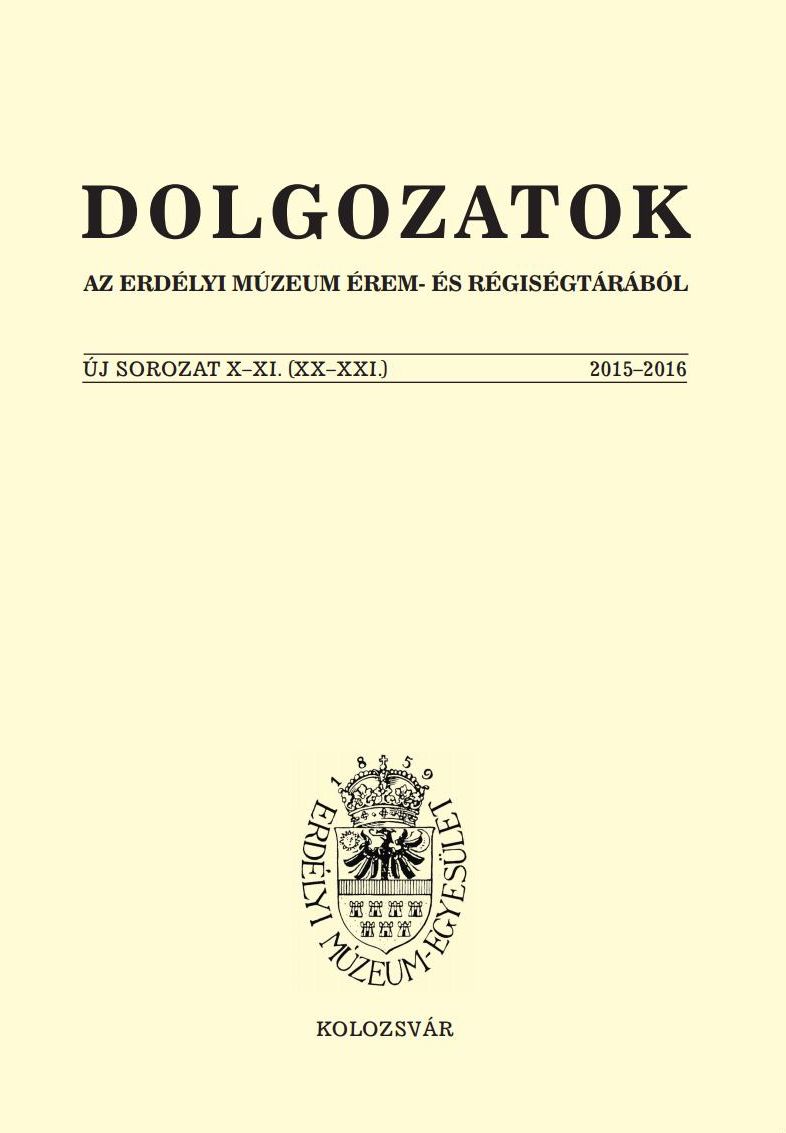Tájhasználat a kolozsmonostori bencés apátság Kajántó-völgyi birtokain
Land use on the Kajántó Valley properties of Kolozsmonostor benedictine abbey
Author(s): Ünige Bencze, Oana TodaSubject(s): 13th to 14th Centuries, 15th Century
Published by: Erdélyi Múzeum-Egyesület
Keywords: Kolozsmonostor; Benedictine abbey; land use; monastic landscape; estate structure; road network
Summary/Abstract: The present paper discusses and reconstructs the land use of the most important royally founded Benedictine abbey of medieval Transylvania, Kolozsmonostor. Along its history the abbey owned and managed around 44 settlements and lands but here we shall concentrate only on a small part of the whole. Important part of our research aims also at mapping and analyzing the settlement and road structure of the investigated region. As a result of our research we managed to reconstruct the late medieval boundary of the monastic estate cluster in the Kajántó (Chinteni) Valley based on a high number of preserved perambulations of the monastic properties and of the neighboring settlements. The estate cluster comprised altogether five settlements or lands (Kajántó, Máriatelke, Bőnye, Tiburcztelke, and Szilvástelke) from which only Kajántó exists today; the others had disappeared along the ages. Most probably Kajántó was the central property, the other settlements and lands were located on its boundary. Their individual boundaries, separating them from Kajántó, were also mentioned, though rarely. Where available, litigious documents were used for boundary reconstruction and land use assessment. The best documented areas were those, where violent land occupations occurred and litigations prolonged for several decades, just as in the case of Tiburcztelke, where litigations lasted for several generations. Such areas were situated especially in the northeast and at the southern boundary line of the estate cluster. The communication network of the studied area shows various functions and a hierarchy of roads. Local or regional ones connected the monastic settlements to the surrounding villages and land plots, while an important long distance communication route, called the King’s road (via Regia), probably ensured the fastest connection to Kolozsmonostor. Generally, the spatial orientation of the roads complied with the inner structures of the properties and with the positioning of the town of Cluj, which represented a major economic force in the region. The monastic land use indicates a great variety for the region, which could support all kinds of uses, such as crop production, animal husbandry, forestry and fishing: arable lands, pastures, hay lands, forests, marshy areas, and fishponds. Yet, if one takes into consideration the intensity and variety of the land use along the border areas of Kajántó, it can be hypothesized that the situation inside the territory, about which the sources are silent, was probably similar.
Journal: Dolgozatok az Erdélyi Múzeum Érem- és Régiségtárából. Új sorozat
- Issue Year: 2016
- Issue No: X-XI
- Page Range: 101-118
- Page Count: 18
- Language: Hungarian

